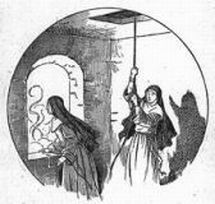 |

|
 |
 |
| |

CHAPTER 3 The First Soldiers of New France

|
|
 |
| |

Another Round Of Iroquois Wars ( 1 page )

|
|
 |
|
|
| |
|
| |

 |
Iroquois surprise attacks
(Click image to enlarge)
|
Thereafter, war with the Iroquois broke out even more intensely, with the Amerindians holding the strategic advantage. They had defeated their enemies to the west, the Eries, and henceforth had nothing to fear. The Hurons had been practically annihilated, and the other Amerindian allies of the French were not nearly strong enough. The Iroquois also held the numerical advantage, because they could not fail to realize that the French garrison numbered barely 50 men. Well provided with arms by the Dutch, the Iroquois went from victory to victory for nearly a decade.
Concern, if not panic, emanates from pages penned by French writers of the time. The Iroquois were everywhere. They struck and disappeared immediately, audacious and always elusive. The fate of their victims was enough to make the hardiest of French souls tremble with fear. A quick death was a blessing, compared with the slow agony of those who were scalped, or worse still, roasted over low fires in an orgy of torture. The fear pervading the French colony spelled Iroquois victory in what today would be called "psychological warfare."
The French responded to these raids as best as they could. In 1658, Governor Voyer d'Argenson set off in pursuit of the Iroquois with a party of 100 men. He intended to confront the Iroquois in a pitched battle, which he had every expectation of winning. Numerous colonists came to assist and swell the ranks of the few soldiers at his disposal. But the Iroquois seemed to evaporate into thin air. A further reason for concern was that no reinforcements arrived from France, despite all the appeals for assistance. Despairing of his cause, the governor fell back on defensive measures, encouraging the inhabitants, who were often living in isolation, to gather together in closed, fortified villages. This led to the creation of the villages of Saint-Pierre, on Île d'Orléans near Quebec, and Sainte-Marie at Cap-de-la-Madeleine, not far from Trois-Rivières. Even the windmills were fortified. The colonists were gradually succumbing to a siege mentality.
|
|
 |
|
|
|
 |
 |





